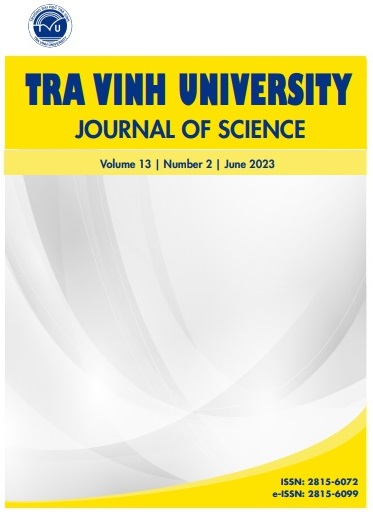UTILIZING INFORMATION TECHNOLOGY TO ENHANCE THE CAPACITY AND EFFICIENCY OF CONTROL SYSTEM FOR TRANSMISSIBLE DISEASES IN HO CHI MINH CITY
Main Article Content
Abstract
A research and development study was conducted from September 2020 to April 2023 involving 9 hospitals, 24 district health centers and 319 commune health stations. The main objective of the study was to establish,
refine, and update a system for controlling directly transmitted diseases in Ho Chi Minh City, as well as assess its practical implementation. Before the system update, the study identified limitations in disease surveillance, particularly in monitoring cases that were not examined or treated at hospitals. The existing reporting
mechanisms also resulted in incomplete disease data, with subpar data quality due to delays and inadequate processing of reported cases. Considering the prevailing circumstances, management requirements and usage needs, the system underwent enhancements and integrated GIS capabilities. This allowed healthcare personnel to swiftly and accurately identify disease cases, determine contacts, establish epidemiological zones, trace
transmission chains, and monitor the implementation of control measures. The improved control system has been successfully implemented, ensuring effective management of community-based hand, foot, and mouth disease. Additionally, the system demonstrates the potential for broader applicability in managing other directly transmitted diseases.
Downloads
Article Details
References
Contact tracing for COVID – 19: current evidence,
options for scale-up and an assessment of resources
needed. Sweden. 2020.
[2] Kangbai JB, Jame PB, Mandoh S, Fofanah AB,
George A, Briama A, et al. Tracking Ebola through
cellphone, Internet of Things and blockchain technology. Curr Res Integr Med. 2018;1(2): 13–15.
[3] Ministry of Health, Vietnam. Providing guidance
on reporting and declaration of infectious diseases
and epidemics [Hướng dẫn chế độ thông tin báo
cáo và khai báo bệnh, dịch bệnh truyền nhiễm].
No.54/2015/TT–BYT. Hanoi: Ministry of Health;
2015.
[4] Le Truong Giang, Luu Dinh Hiep. Application of GIS
technology for monitoring epidemics in Ho Chi Minh
City. [Ứng dụng công nghệ GIS giám sát dịch bệnh
nguy hiểm trên địa bàn Thành phố Hồ Chí Minh].
Project report. Center for Developing Information
Technology and Geographic Information System - Ho
Chi Minh City University of Technology; 2007.
[5] Pham Viet Hong. Application of remote sensing and
GIS technology for monitoring the risk of malaria
outbreak for the purpose of community health care.
[Ứng dụng viễn thám và GIS để theo dõi nguy cơ
phát sinh bệnh sốt rét phục vụ cho việc chăm sóc sức
khỏe cộng đồng]. [Project report]. Hanoi: Institute of
Marine Geology and Geophysics; 2014.
[6] Le Thi Ngoc Anh, Dau Hoang. Application of GIS
technology for forecasting cholera outbreaks. [Ứng
dụng GIS trong dự báo dịch tả]. Journal of Science
and Technology on Information and Communications
[Tạp chí Khoa học Công nghệ thông tin và Truyền thông]. 2016;1(1): 1-8.
[7] Firouzi F, Farahani B, Daneshmand M, Grise K,
Song J, Saracco R. et al. Harnessing the power of
smart and connected health to tackle COVID-19:
IoT, AI, robotics, and blockchain for a better world.
IEEE Internet of Things Journal. 2021;8(16): 12826–12846.
